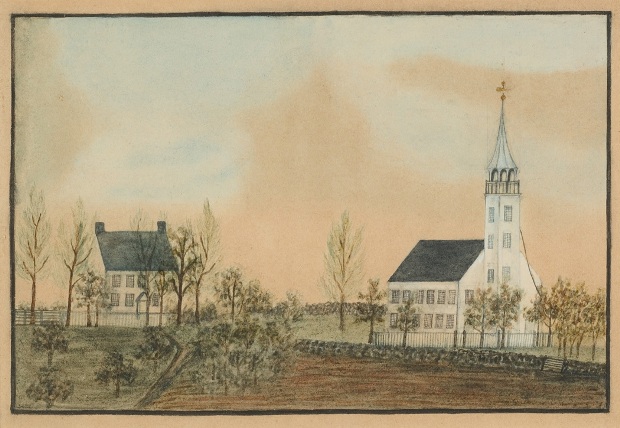On September 12, 1873, the bell in the Episcopal Church rang the cry—Mr. Bailey’s carriage house, located in the center of town, was on fire. It soon became clear that the carriage house could not be saved. All effort was put into saving his neighbor’s barn. An inadequate supply of buckets caused considerable delay and made the work doubly hard.

Fire Bucket, 1780, Lewes Barnes, Federal F.S. No. 3, Leather, paint, metal, Gift of the Junior League of Greenwich – Greenwich Historical Society
For nearly three hours the top and sides of Mrs. Churchill’s barn were kept wet by drawing and passing the buckets filled with water, carrying them to the top of the barn and then throwing them back to pass down the line to be refilled. More than an hour after the bell rang, Putnam Hose Company of Port Chester arrived. No casualties were reported, but several people were injured when they were struck by pails thrown from the top of the building.
Following the blaze, the local newspaper’s headline read: “Heroic work by citizens to save surrounding property.” While the reporter had praise for all the volunteers who stepped forward, he singled out one for special acclaim:
We cannot refrain from making special mention of Mr. Wm. Talbot, Jr., who was among the first to go up on the roof and one of the last to leave it, and who not only chose the most dangerous positions, but so well judged the efforts which he put forth that he is fairly entitled to a large share of the credit.
Karen Frederick, Curator and Exhibitions Coordinator, and Anne Young, former Curator of Library and Archives, of the Greenwich Historical Society contributed this article and co-curated the exhibition Everyday Heroes: Greenwich First Responders (September 14 through August 26, 2012) from which it is derived.









